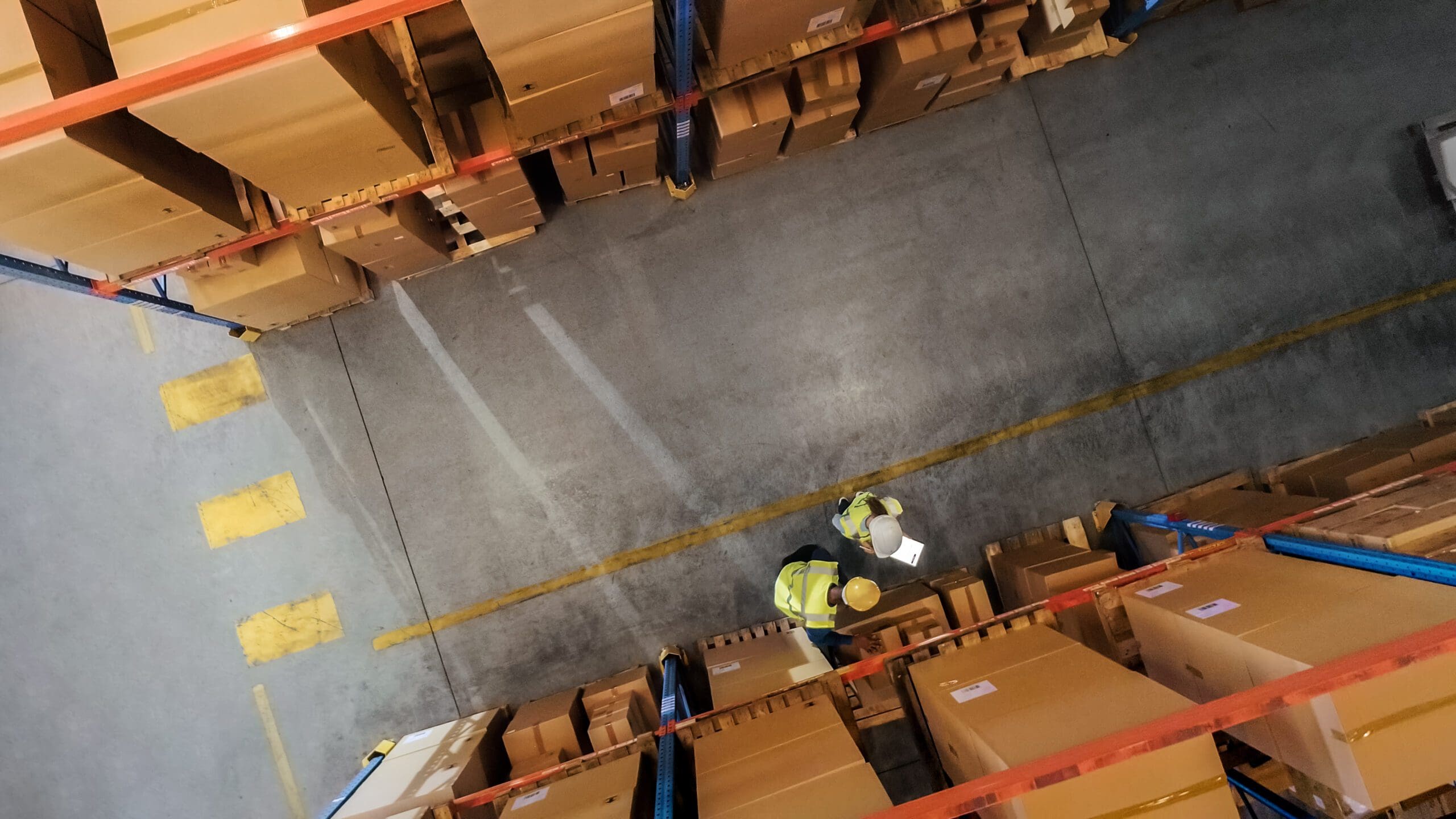What is end-to-end supply chain optimization?
What is an end-to-end supply chain? An end-to-end supply chain consists of an integrated process that starts with the design of a product and the procurement of the raw materials necessary for manufacturing. After procurement comes scheduling, production, distribution, and then the final link in the supply chain is the delivery to the customer or end-user. The supply chain can be extended beyond the final delivery to include potential events such as processing returns, shipping replacement parts, and making repairs, servicing products, or selling and shipping accessories.
An end-to-end supply chain concept is different from a traditional supply chain because it integrates all supply chain functions. Having an integrated supply chain and visibility across the entire supply chain allows businesses to provide a smooth and efficient customer experience. A traditional supply chain may not have the same type of integration as an end-to-end supply chain. Additionally, each of the functions within a traditional supply chain is handled separately. This can cause inefficiencies and limit the overall performance of the supply chain. Now that we know the difference between a traditional and an end-to-end supply chain, how does a business optimize an end-to-end supply chain and what does supply chain optimization mean? End-to-end supply chain optimization can be boiled down to one word, integration. In order to properly integrate a supply chain, a business may need to consider investing in a quality enterprise resource planning system. An ERP allows a supply chain manager to view real-time information from every link in the supply chain all at the same time. Once an ERP has been set up and integration has been well established, then further optimization will naturally follow. End-to-end supply chain optimization essentially is the actions of a supply chain manager, or the results of supply chain integration, that help to make a supply chain more efficient by reducing the waste of time, money, labor, and other resources. An optimized supply chain allows companies to maximize gross profits, lower operating costs, and create the ideal customer experience all while balancing the costs of distribution, inventory, manufacturing, and transportation.
What is the purpose of supply chain optimization?
The main purpose of end-to-end supply chain optimization is to increase gross profits by reducing waste and operating costs, increasing efficiency, and balancing all the expenditures related to the distribution, inventory management, manufacturing, and transportation of a product. Aside from this main purpose, there are many benefits to implementing an action plan to optimize the supply chain of any business. Here are some of the most impactful benefits that a business may see with a well-optimized supply chain.
- Reduction of operating costs: Reducing operating costs is one of the most impactful benefits that an optimization supply chain can bring to a business. The first way operating costs can be reduced through supply chain optimization is by increasing process efficiency to save on transaction execution and labor costs. Additionally, businesses may be able to identify repetitive, duplicated, and redundant processes to automate them, further reducing labor costs. Second, supply chain optimization helps keep prime levels of inventory to always meet customer needs while reducing how much capital is tied up in inventory. Last, infrastructure costs can be reduced and more easily managed by optimizing warehousing, logistics, and delivery processes/
- Increased revenues: Supply chain optimization increases the number of perfect orders. Perfect orders are when a customer places an order and all the correct items are picked, packed, and shipped on time and up to the customer’s expectations. Perfect orders lead to customer satisfaction, increases in re-ordering, customer retention, and customer avocation, all of which can boost future revenues.
- Track and improve supplier performance: Enterprise resource planning systems can provide real-time data on the performance of every supplier that a business has. This allows a supply chain manager to track which suppliers are performing well and which are underperforming. They can also identify where bottlenecks and hold-ups may be occurring in the supply chain and address them. This type of information can be used to improve supplier performance and make strategic sourcing decisions.
- Integration: Supply chain integration allows a supply chain manager to have total visibility and transparency in every link of the supply chain. This can help create constant improvements in operations and planning. Improvements can be made and performance can be tracked in many components of the supply chain including sales forecasting, cash-flow management, on-time delivery, route planning, credit control, margin measurements, and disaster recovery.
These are just only a few of the many benefits that an optimized supply chain can bring to a business. Supply chain optimization should be a major concern for any business owner who is looking to increase revenues and decrease operating costs.
Tips and best practices for supply chain optimization
Optimizing a supply chain is not something that occurs overnight. It takes many hours of planning, studying performance metrics, and identifying potential inefficiencies to begin to develop a cohesive strategy that can be used for supply chain optimization. Here are some quick tips and best practices to remember when exploring ways to best optimize the supply chain of your organization.
- Create a supply chain task force: It is important that you have leaders from all the different departments within your company come together with supply chain management to discuss ways to optimize the supply chain in a way that aligns with the goals of the entire organization. Having interdepartmental communication related to supply chain optimization ensures that everyone is on the same page and that they are all active participants ready to implement a clear and cohesive supply chain optimization strategy.
- Use technology to streamline processes: Within an inefficient supply chain are many repetitive and routine tasks that are completed manually. Manual processes are not only inefficient at times, but they can also create a lack of visibility within the supply chain. By utilizing supply chain management software, a company can improve coordination between supply chain processes, increase the visibility of the supply chain as a whole, and reduce the amount of time wasted on manual processes that can be streamlined and made to be fully automated.
- Tend to supplier relations: It is not enough to find suppliers who provide the best materials at the best prices. A supply chain manager should be examining supplier performance metrics constantly to identify any potential issues or bottlenecks in the supply chain. Supply chain managers should also have strong communication with each of an organization’s suppliers as well as establish clear goals and expectations to continuously improve the efficiency of supplier processes.
- Inventory Control / Inventory optimization: Optimizing inventory quantities involves a business taking a look at the true cost of holding and storing inventory. Holding and storing inventory for long periods of time can cost a great deal of money. Optimizing inventory quantities includes forecasting and demand planning in order to have the proper amount of inventory at all times. The balance lies in having enough inventory to fill every order, but at the same time, not holding and storing the inventory for long periods of time, which doing so can eat directly into profits.
- Logistics: Another part of supply chain optimization is working with transportation companies to ensure your supplies are coming in when you need them and that your products are successfully reaching your customers promptly. Late and/or lost shipments are easy ways to give customers unsatisfying experiences with your business. Unpleasant experiences and negative reviews can do a great deal of damage to the reputation of an eCommerce business.
How Kickfurther can help
Controlling inventory and running an efficient operation is critical if you want to operate a lean business. While it may require investment to put systems in place to manage inventory and supply chain, they are well worth the investment in most cases. As you analyze supply chain and inventory you may determine you need more or less of certain products or processes. Enjoy the process of building your business and watching it flourish. When you hit obstacles, find solutions. At some point, you may encounter cash flow problems or the need for inventory financing. Kickfurther is the world’s first online inventory financing platform that enables companies to access funds that they are unable to acquire through traditional sources. We connect brands to a community of eager buyers who help fund the inventory on consignment and give brands the flexibility to pay that back as they receive cash from their sales. This alleviates the cash-flow pinch that lenders can cause without customized repayment schedules, allowing your brand to scale quickly without impeding your ability to maintain inventory or financial flexibility.
Optimize your supply chain and grow your business. . . unlock affordable inventory financing today!









